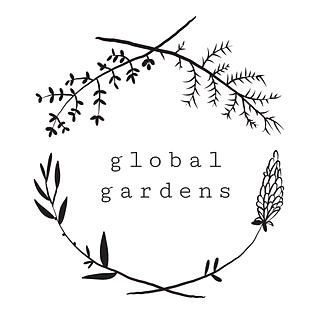WILDLIFE FRIENDLY GARDENING
- Global Gardens
- Jul 18, 2021
- 3 min read
Updated: Jul 23, 2021

In the talk about the Urban Buzz Pollinator Pledge, Hayley Herridge of Buglife Cymru gave a bit of guidance around how to make your garden or allotment super welcoming to pollinators.
1. Timing gardening tasks
Learning about lifecycles of pollinators can help you best meet their needs in your garden as you plan your gardening activities.
Fallen leaves and log piles can provide overwintering habitats.
Delaying cutting seedheads til spring to provide overwintering forage.
Mowing the lawn less regularly and on a high cut. Adding buttercups, cat's ears, daisies, clovers and dandelions can also provide extra pollen and nectar for pollinators.
2.Key habitat features
Pollinators like. a range of habitats depending upon their lifecycle - whether for hibernating, nesting or feeding. Creating a range of habitats in your garden or allotment can help pollinators as they pass through various stages in their lifecycle. This can include floral lawns, deadwood piles, nectar borders, meadows, ponds and boggy areas, trees and hedgerows. Keeping some areas wild and unkept can support pollinators as they hibernate overwinter. You can also support pollinators with structures ranging from old walls with cavities and other man-made features such as bee hotels and bee banks.
3.Diversity of species
-Diversity of plant families especially buttercup, dead nettle, pea, cabbage, rose, daisy families.
-Diversity of habitats from ponds to hedgerows to meadows to flower borders.
-Avoid most bedding plants (eg begonias, petunias, busy lizzzies) as they have little pollen/nectar.
-Avoid double or multi-petalled plants as it is harder for pollinators to reach pollen/nectar. Instead choose, simple open flowers.
Here are some other top tips to help support wildlife in your garden...
Drift planting
Plant in drifts to support pollinators (eg repeat plantings of specific plant families can be helpful)
Native plants support native species
Plant native flowers because native plants and native wildlife have evolved over millennia to co-exist.
Forage through the year
Try to have a range of plants providing nectar/pollen throughout the year. Below are some of Hayley's top recommendations for planting through the year.
4.Forage through the year
Early Spring
Wildflowers: White dead nettle, primroses, Garlic mustard, Cow parsley, Cowslip, Dandelion, English Bluebell, Cuckoo flower, Bugle, Dog violet, Red campion.
Garden flowers: Lungowrt, Hellebores, Grape hyacinth, Green alkanet, Winter aconite, Crocus, Mahonia, Viburnum, Forget-me-not, Honesty, Sweet rocket, Aubretia.
Trees; Goat willow, Rowan, Blackthorn, Hawthorn, Winter flowering cherry, Winter flowering honeysuckle, Apple, Plum, Holly, Purging buckthorn.
Summer
Wildflowers: Foxgloves, Knapweeds, Bird's foot trefoil, Cloers, Vetches, Viper's bugloss, Ragwort, Mallows, Meadow cranesbill,Wild carrot, Bramble, Great mullein, Field scabious, Wild rockrose, Wild marjoram, Kidney vetch, Yarrow, Great mullein.
Garden flowers: Allium, Catmint, Comfrey, Lavender, Thyme, Marjoram, Ornamental thistles (thirsium), Phacelia, Fennel, Chives, Verbena, Feverfew, Valerian, Sweet william, Evening primrose, Night-scented stock.
Trailing plants: Wisteria, Honeysuckle, Buddleia, Rose, Wild privet.
Autumn
Wildflowers: Ivy, Common knapweed, Thistles, Devil's bit scabious, Agrimony, Teasal, Wild carrot, Cinquefoil, Cornflower, Purple loosestrife, Rosebay willowherb.
Garden plants: Vervain, Michaelmas daisy, Sedum, Late flowering heather, Globe thistle, Catmint, Fennel, Lavenders, Sea holly, Sunflowers, Borage, Cardoon, Echinacea, Hyssop.
Trees and shrubs: Bee-bee tree, Wild privet, Loquat, Lucerne, Budlliea.
And also, leaving rotting fruit!
If you want to be attracting certain pollinators, you need to be planting the right plants! Here are some more details about caterpillar friendly plants...
Caterpillar food plants
The whites
Cabbage family, Cuckoo flower and Garlic mustard, Alder, Purging Buckthorn.
The vanessids including Peacock, Red Admiral, Small Tortoiseshell, Painted Lady, Comma
Nettles, Thistles, Artichoke, Hops
The blues
Holly blue - Holly and ivy
Common blue: Bird's foot trefoil
Small copper: Sorrel or dock
Brown argus: Common rock rose
The hairstreaks
White letter hairstreak: Elm
Purple hairstreak: Oak
Rare brown and black hairstreak: Blackthorn
Bramble: peach blossom, buff arches.
Willows: Sallow kitten, Popular hawk-moth, Puss moth, Herald, Red underwing.
Oak: Merveille du jour, Burnished brass, Jersey tiger, Beautiful golden, Y, Spectable, Snout.
Hop: Current pug, Button snout, Buff ermine, Pale tussock.
Privet: Privet hawk-moth, Willow beauty.












Comments